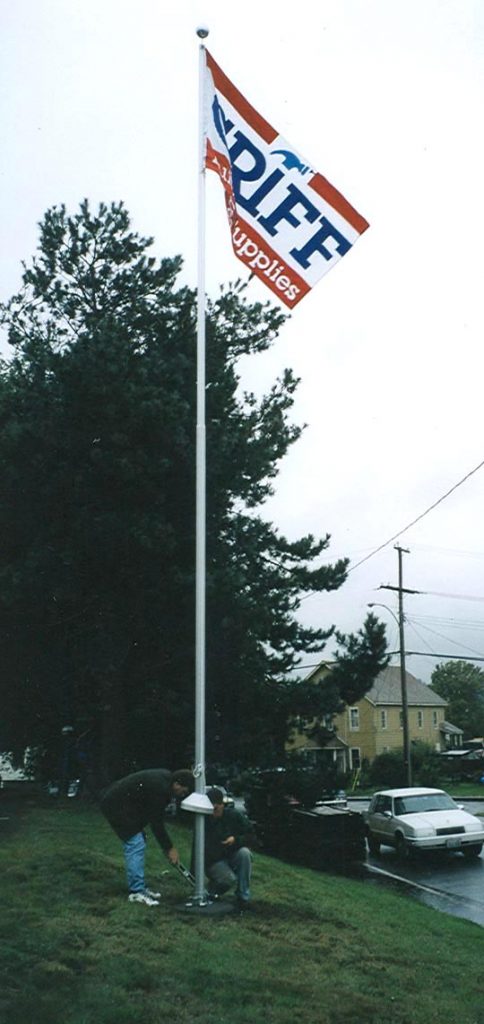An inground flagpole is a flagpole that is fixed and firmly established on the ground. It is intended to remain permanently on the ground where it stands. Since this flagopole is planted on the ground, it should be able to withstand high velocity winds of up to 130 mph. Of course, its strength depends on how tall it is and what materials are used to construct it.
Required Equipment and Materials
Required equipment and materials include a shovel, a carpenter’s level, your flagpole, a hacksaw, tape measure, PVC pipe, and a bag of cement. You’ll be using the PVC pipe to act as a groundsleeve. However, if you’re looking for a firmer option you can use a steel pipe or cylinder to function as your groundsleeve. The steel groundsleeve will come with steel plates to lock it in place. There are also steel wedges on the inside that center’s the flagpole base. Another advantage of a steel groundsleeve is that you can include a ground spike, which helps with possible lightning strikes.
Constructing the Inground Flagpole
The first step to construct an inground flagpole is to dig a hole on the ground where you intend to set it up. Dig up the foundation hole and then get the soil wet in the process. If you’re going to plant a 20-foot flagpole then make your foundation hole as deep as three feet with a width of two feet. If you’re using a PVC pipe then you should cut off a length of 2 1/2 feet off the entire pipe to serve as the groundsleeve.
The length will vary depending if your flagpole is longer than 20 feet. To figure out how deep your foundation should go, measure the total length of your inground flagpole. The hole you are to dig should be about ten percent of the total length of the flagpole.
It is now time to place your PVC pipe or steel groundsleeve into the hole. You may even get a flash collar over the foundation as an optional item. It goes over the groundsleeve protecting the sleeve and the bottom of the flagpole and giving a finished look to your work. Use a carpenter’s level to check for alignment and adjust things accordingly. Pour concrete into the area around the sleeve. Pour enough concrete until you can only see about eight inches of the sleeve pipe.
Once the concrete dries up, it is now time to raise your inground flagpole and fit it into the pipe of your foundation. Check the alignment of the pole with your carpenter’s level and keep the flagpole straight. If you plan to add any form of rigging onto your inground flagpole you should do it before settling it into the pipe. Seal the base of your flagpole to keep water away thus avoiding corrosion.



